Sunday, March 27, 2011
The second week of work started out very well. The bad weather with its coldness and rainfalls was gone, and the sun started to warm up the Petra region once again. The gears of the teams on Umm el-Biyara and on Ez-Zantur were now greased, so that work continued on both sites as usual. On Umm el-Biyara many interesting structures came to light. Some of them are situated very close to the edge of the bedrock, what makes taking pictures nearly a kind of suicidal acrobatic act.
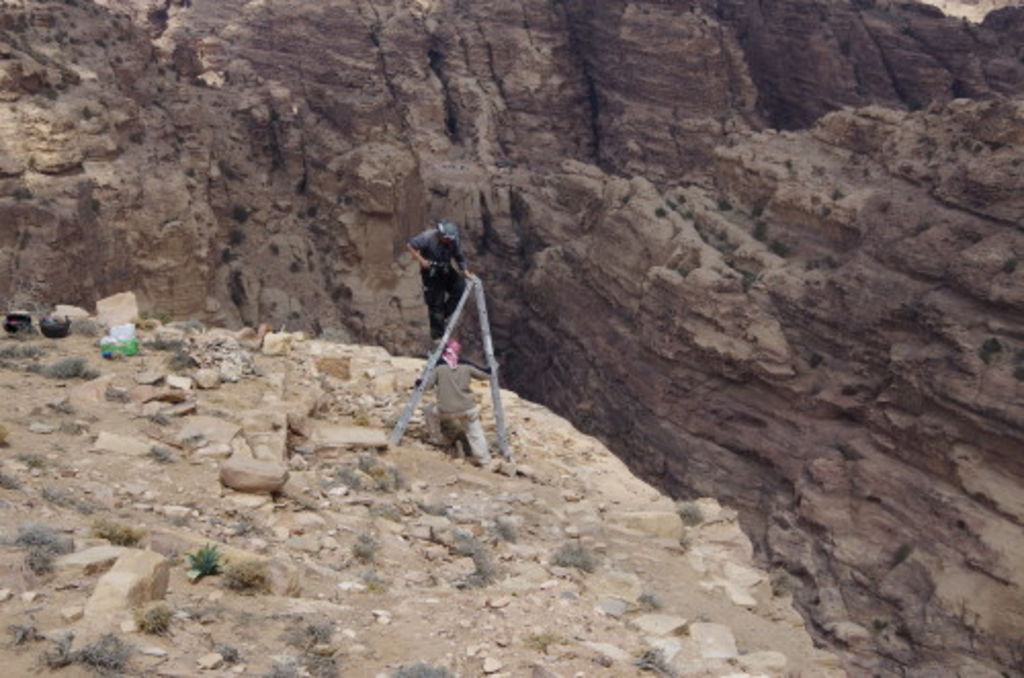
Climbing up and down Umm el-Biyara can be very dangerous task, and even deadly, when trying during winter time or heavy rainfalls. This is not only proved by tourist not finding their way back to Petra or falling to their death, but also by many poor animals, that (although very used to landscape) fall to their death.
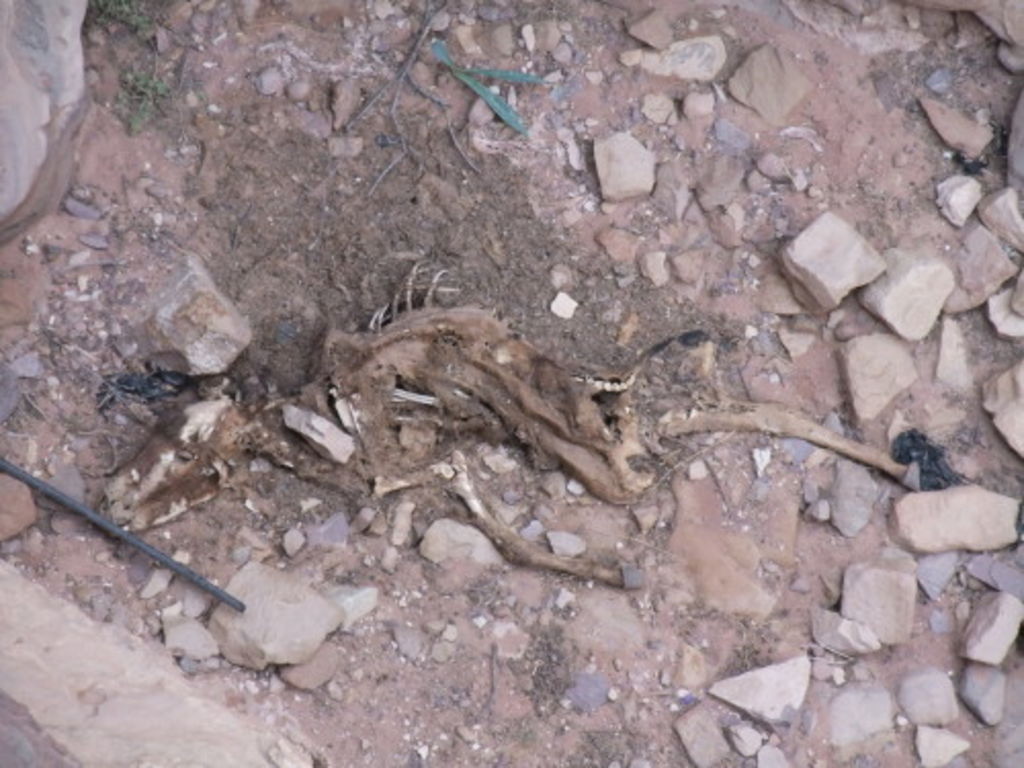
Monday, March 28, 2011
As already mentioned above the excavations on Umm el-Biyara revealed some interesting structures. One of them is the hypocaust room, which was built right to the edge of the rock. Another one is a large room, built on the plateau behind the hypocaust room. The third area lies in the northern part of the plateau, where two bassins block the room on its small side. On the western side of these two bassins there is another room, in which a chanel system was found. This room could be a toilet.

On Ez-Zantur the worked continued as usal. Most of the debris on the outside of the western wall has been removed. Now there are some remaining squares to excavate in order to get an idea, whether the gap between the retaining wall of the house and the big opening going down into a water tank was used or not used at all.
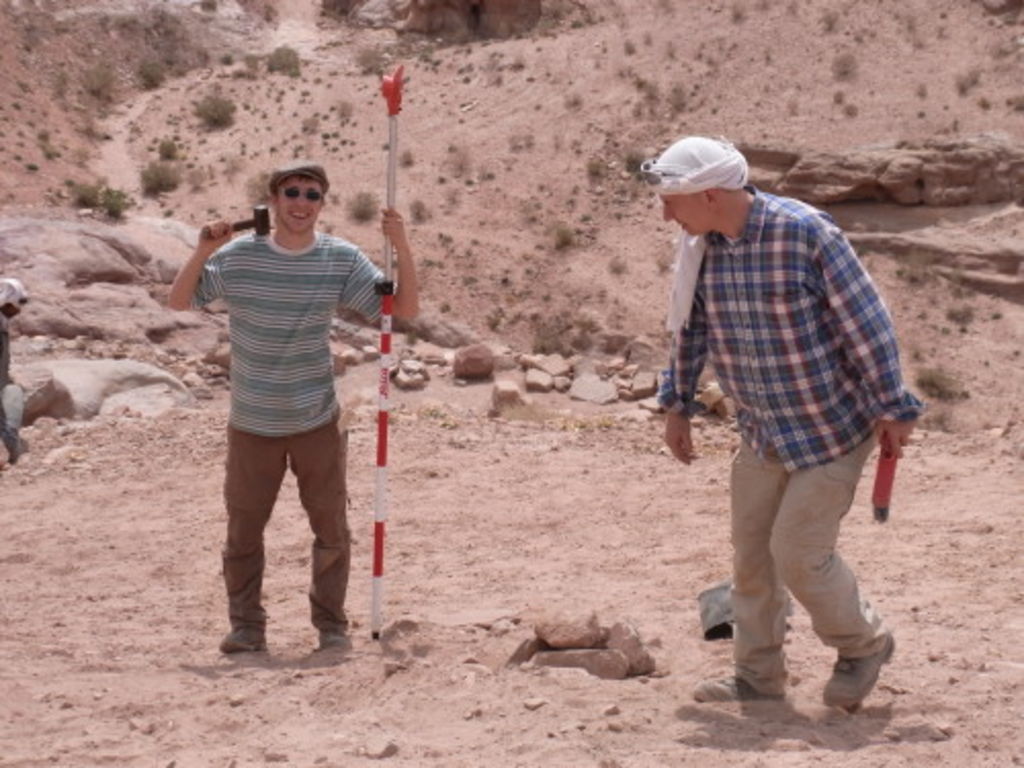
Tuesday, March 29, 2011
On Umm el-Biyara work continued as usual. In the area of the supposed room in the area of the baths more and more fallen wall stones and huge floor plates came to light, but no traces of a floor yet. It seems that the room was in fact divided into three parts by two arched colum rows.

On Ez-Zantur continued as usual, too. There were quite some struggles about this year’s excavation outfit. We propose you here two of the high fashion dresses. On the left Christoph Schneider is wearing a long sleved lumberjack shirt with a carefully designed square pattern and a delicately draped white hatta on his head. On the right Jana Falkenberg is wearing a simliar shirt as Christoph, but this time in red, which absorbes and at the same time reflects the reddish colour of the sand stone. A mutual connection the the local environment, which is further enhanced by the dark red hatta on her head. Both costumes stand for individual high level taste and quality manufacture, especially made for archaeological excavations.

Wednesday, March 30, 2011
Staying over night on Umm el-Biyara got more and more comfortable. But the two main problems up there remain the same: the hygenic circumstances and supply of water and food. The first one is diminuished by the use of soap and washing powder, the second one is solved by bringing up food and water by donkey every day (except on the weekend) or putting personal delights into his/her backpack. The collecting of firewood is done individually by the people who stay up during the night, in order to provide fire for a delicious evening meal and for a healthy breakfast with tea or coffee the next day.
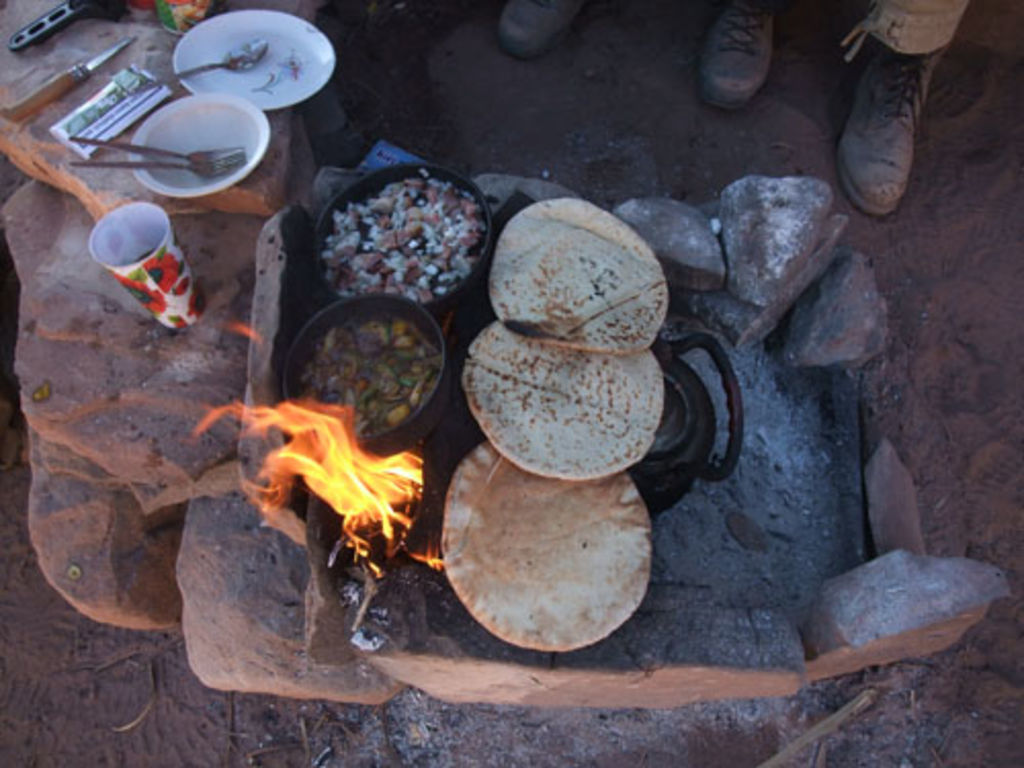
On Ez-Zantur the continued as usal. More squares are opened, in order to clean up the entire rock in front of the western wall of the mansion. As the way to Ez-Zantur is not as far as to the top of Umm el-Biyara, work already starts at six o’clock in the morning. This is a great advantage over the team of Umm el-Biyara, as they have to carry up their stomachs filled with bread, coffee and frosties farther and higher.
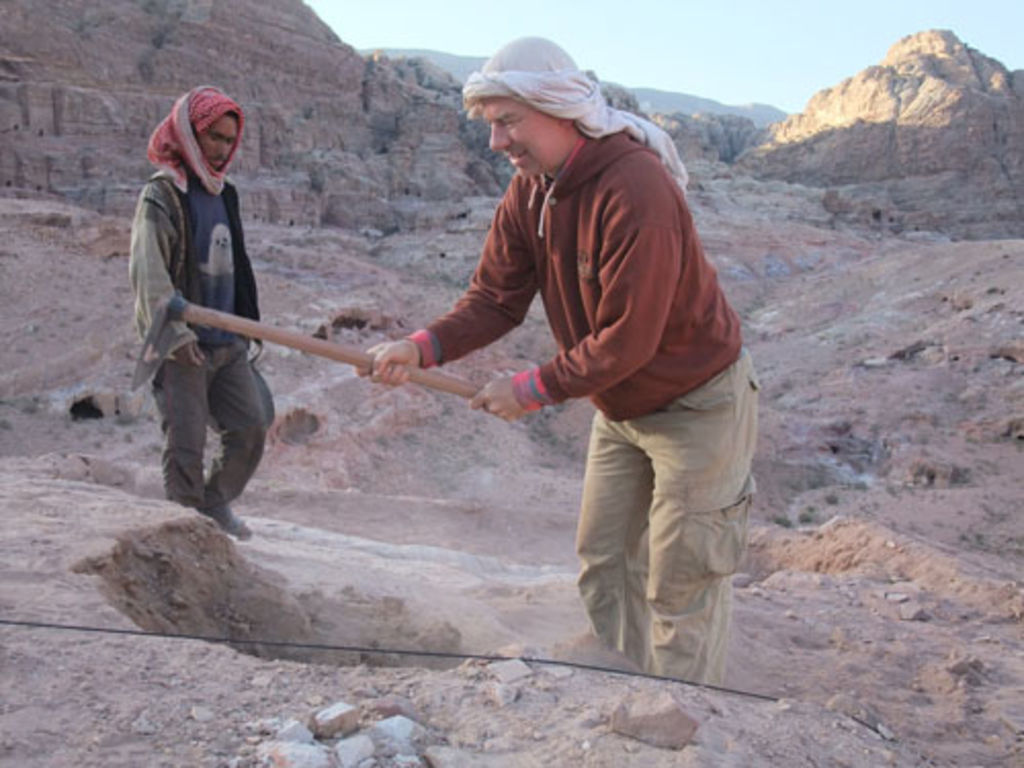
Thursday, March 31, 2011
With the Shargije wind coming from the eastern desert areas the temperature was suddenly rising up to thirty degrees. Excavation work therefore became a little bit more painfull and slow. But as an appointment made especially for the weekend, a very special find was made in the area of the room: the torso of a silen.

In the evening the special find of the day, but also the other fine finds on Umm el-Biyara and on Ez-Zantur, were celebrated with a tasty diner and extra round of finest Scotish Whiskey. Everybody was happy that the first part of this year’s excavations up to now were very successfull.

Friday, April 1, 2011
During the second weekend everybody was taking a timeout from work. Some people slept a whole day because they had taken a much too deep look into the whiskey glas, others walked in and around the Petra area to see new location or collect informations for their BA and MA studies. It was also a good time to recall the two passed weeks and think about the two weeks to come on Umm el-Biyara and on Ez-Zantur, and the four weeks more occupied by the Aslah triclinium excavations and the brand new North-Eastern Petra Project, about which you will learn more in weeks five and six of this blog.
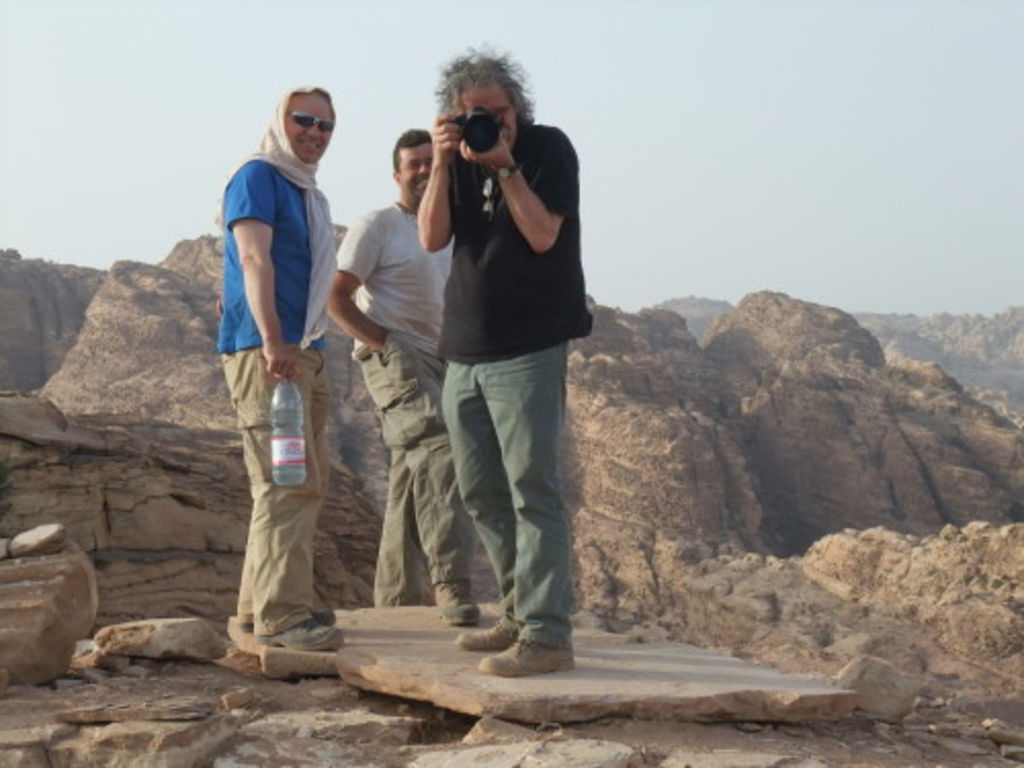
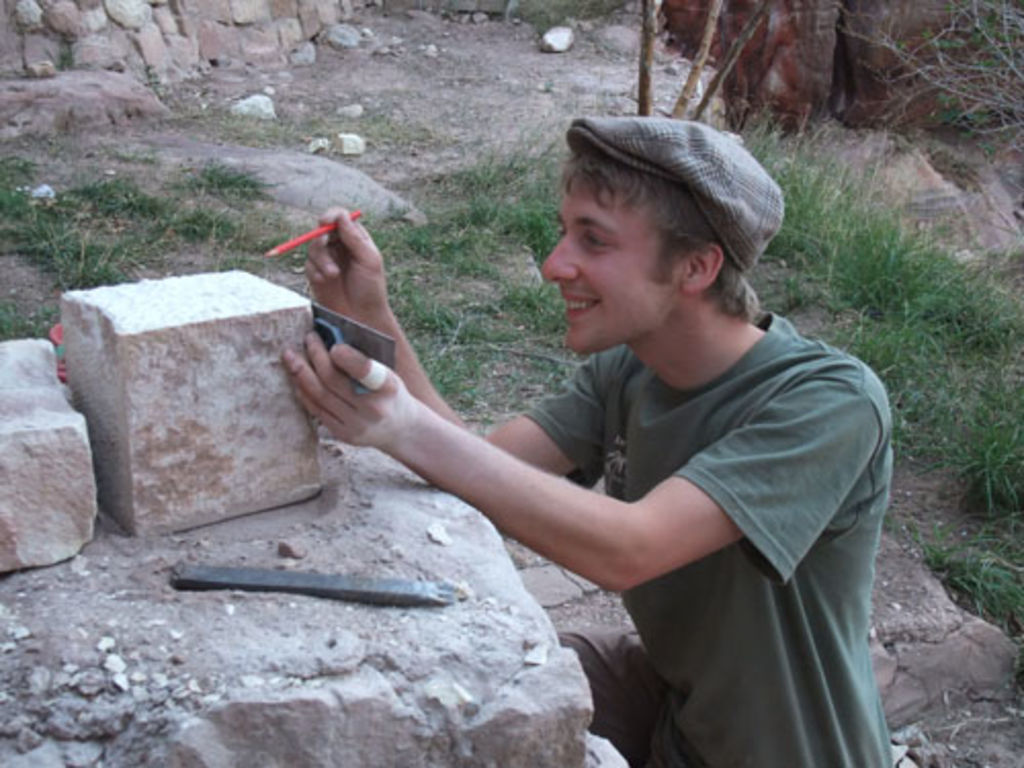
Saturday, April 2, 2011
As this year’s campaign is once again in the spring the weather conditions change from day to day. Cold windy mornings contrast with hot sunny days, sometimes both conditions can even happen on the same day. But neverless, the playing of clouds in and around the Petra mountains is always amazing.

